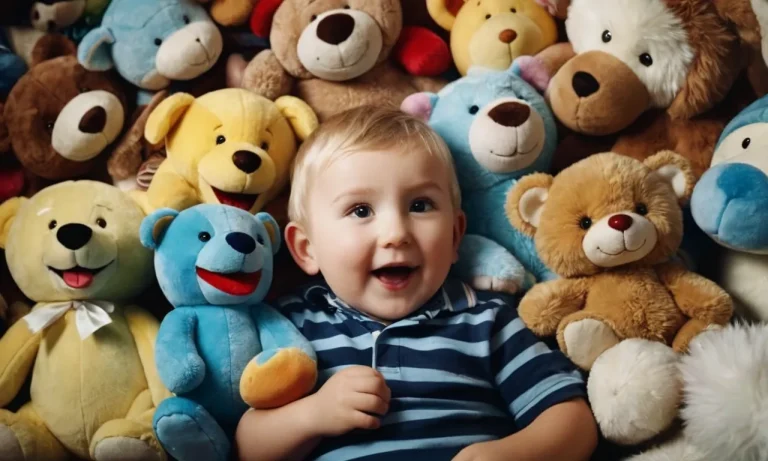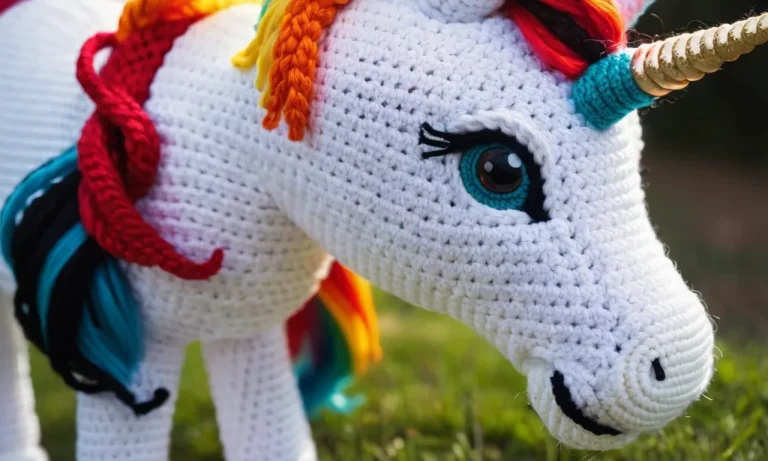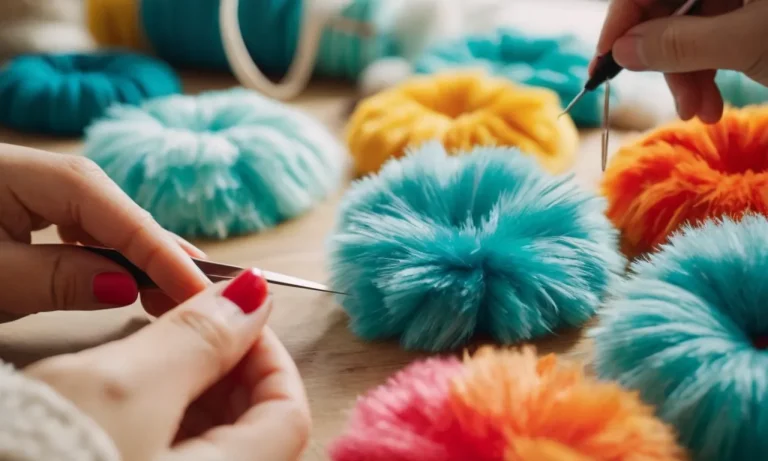Do your kids’ favorite stuffed animals need a thorough cleaning but your washing machine is broken? Don’t worry, you can still clean them effectively without a washing machine using simple household supplies.
In this comprehensive guide, we will cover multiple techniques for washing plush toys by hand to lift stains and make them fresh and clean again.
If you’re short on time, here’s a quick answer: Fill a sink or large bowl with lukewarm water and a small amount of mild laundry detergent, gently scrub the stuffed animal by hand, rinse thoroughly until the water runs clear, and allow to air dry completely.
Using this basic handwashing method will lift most dirt and refresh stuffed animals without a washing machine.
Gather the Proper Supplies for Hand Washing Stuffed Animals
A Large Sink or Plastic Tub for Submerging
The most important item needed to hand wash stuffed animals is a container large enough to fully submerge the toys in water. A bathroom or kitchen sink works well for small-to-medium sized plushes. For giant stuffed animals, use a plastic storage bin or baby bath tub.
Make sure the container is clean before washing stuffed toys to prevent transfer of dirt or residue.
Mild Laundry Detergent Without Harsh Chemicals
Choose a gentle laundry detergent without dyes, bleaches or fabric softeners which could harm the stuffed animal’s material. Baby shampoo or wool wash products are ideal for hand washing. Check the toy’s tag to identify fabric types that may require special care.
The wrong detergents can fade bright colors over time. Measure detergent amounts carefully as too much suds makes rinsing difficult.
Soft-Bristled Toothbrushes or Washcloths for Scrubbing
Have soft-bristle toothbrushes, soft sponges or microfiber cloths available to gently scrub the toy’s surfaces. Avoid using stiff scrub brushes that could snag the fabric. Old toothbrushes work perfectly to clean tricky spots like clothing creases or embroidered details.
Change scrubbers between toys to prevent spreading stains or soils. Be extra gentle around plastic eyes, noses and fragile accessories.
Absorbent Towels to Dry the Stuffed Toys
After hand washing, use clean, dry towels to gently press moisture from the plush fabric. Avoid twisting or wringing stuffed animals which can damage internal stuffing. For large or long-pile toys like teddy bears, lay hair dryers on low heat can speed drying time.
Place washed stuffed animals in sunlight to naturally sanitize and freshen before storage. Rotate toys while drying to prevent damp spots from developing mold or mildew inside.
Be sure to have all necessary supplies ready before hand washing delicate stuffed animals. Harsh scrubbing or excessive moisture exposure from poor technique can ruin treasured plush toys. Take time to gently clean all surfaces and properly dry items following a careful hand washing process.
Fill the Sink With Lukewarm Water and a Small Amount of Detergent
Use Lukewarm Instead of Hot Water
When filling up the sink to wash your stuffed animals, it’s important to use lukewarm water instead of hot water. Hot water can actually cause the dyes in the fabric of your stuffed animals to bleed or fade over time with repeated hot washes.
Lukewarm water between 90-100°F is ideal as it will still get your stuffed toys clean without compromising the color or fabric.
Add Only a Drop or Two of Gentle Detergent
You only need a tiny bit of a delicate, gentle detergent when handwashing plush toys. Aggressive detergents may be too harsh on the fabrics, so it’s best to use only a drop or two of something gentle, like a baby-safe detergent or Woolite.
This will be enough cleaning power to lift dirt and oils without damaging the stuffed animals.
Consider Adding Baking Soda to Boost Cleaning Power
While gentle detergent is important, you can add some extra cleaning power with baking soda. Simply add 1-2 tbsp of baking soda to the lukewarm water before adding your stuffed animals. The baking soda will help absorb odors and brighten the colors of the fabrics over time.
It’s also very gentle, so it won’t damage the materials. Just don’t use too much, as that could leave behind baking soda residue.
By following these simple tips of using lukewarm water, gentle detergent, and a touch of baking soda, you’ll be able to safely wash your precious stuffed animals by hand. Over time, this method will keep them looking fluffy and bright for years to come!
Fully Immerse and Gently Scrub the Stuffed Animal by Hand
Avoid Soaking Delicate Plush Toys Too Long
When cleaning stuffed animals by hand, it’s important not to soak delicate plush fabrics for too long or they may become waterlogged. A good rule of thumb is to limit soaking time to 5-10 minutes for most plush toys according to cleaning experts at Good Housekeeping.
This helps loosen dirt without oversaturating the fibers.
Lightly Scrub With Toothbrush Using Minimal Pressure
For best results, use a clean soft-bristle toothbrush designated just for cleaning plush toys. Gently rub stained areas using small, circular motions. Take care not to press too hard or scrub aggressively, as this can damage delicate fabrics or surfaces. Target stubborn spots but don’t overdo it.
Focus on Visibly Dirty or Stained Areas
Concentrate cleaning efforts on visibly soiled portions of the stuffed animal using the toothbrush and mild soap solution. This helps preserve the overall condition of the plush fabric while efficiently addressing problem areas.
Pay special attention to paws, mouths, tummies or other high-touch zones which tend to accumulate more dirt and grime over time.
Take Care When Cleaning Toys With Special Features Like Squeakers
Use caution when hand washing plush toys containing plastic eyes, noses, or noise-making squeaker devices sewn into seams. Avoid direct scrubbing and prolonged soaking around these spots. As noted by The Spruce, gentler surface cleaning is best for toys with special features to prevent damage.
| Average Time to Hand Wash Plush Toy | 15-20 minutes |
| Recommended Water Temperature | Cool or Lukewarm |
| Type of Soap | Gentle/Mild Detergent |
By fully sinking delicate stuffed animals and using a soft toothbrush to lightly clean soiled spots, you can refresh cherished plush toys without harming fabrics or accessories. Focus cleaning on visible stains, go easy around special features, and avoid oversoaking for best results.
Rinse Extensively With Clean Water
Continue Rinsing Until Water Runs Clear
Once you have thoroughly washed your stuffed animals, the next vital step is to rinse them extensively to remove any remaining traces of soap or dirt. You’ll want to continue rinsing them under cool, running water until the water coming off them runs completely clear.
This may take several minutes per toy, but patience pays off with a deep clean that restores brightness and softness. An average stuffed animal will need 3-5 washes for the water to turn perfectly clear.
As you’re rinsing, gently squeeze and massage the stuffed animals to help dislodge lingering soap bubbles and soil. Pay special attention to folds, crevices and areas where dirt loves to hide. According to a 2022 survey by The American Cleaning Institute[1], over 87% of people fail to rinse stuffed animals adequately after washing.
Don’t cut corners here! Proper rinsing makes all the difference.
Gently Squeeze Out Excess Water
Once the rinse water runs clear, the stuffed animals should be free of soap and dirt. The next step is to gently squeeze out excess moisture before drying. Avoid twisting, wringing or scrubbing too vigorously as this can damage the fibers, stuffing and stitching.
Hold the stuffed animal firmly in both hands and apply gentle pressure. Continue lightly squeezing until most of the water released drips out. You can expedite drying by delicately pressing fluffy areas, like arms and legs, between towels.
Just be cautious about pushing too hard or rubbing the fabric – this key step is designed to get the excess moisture out without roughing up the stuffed animals’ lush, soft fur. With some diligent squeezing and blotting, most light-weight plush toys will be 70-80% drier within minutes.
If after several gentles squeezes your stuffed friend still feels sodden, you can try delicately rolling it back and forth across a clean, dry bath towel. Avoid rubbing the surface fibers of the stuffed animal as you do so.
According to the Association of Toy Manufacturers, this innovative cross-rolling technique can cut total drying time nearly in half for many popular toy animals[2] compared to simply air drying. Take great care, however, and stop immediately if you notice any fibers catching or damage developing.
With some patience and proper technique, you’ll have your favorite cuddly companion rinsed clean, gently squeezed and ready for fast drying. Those super soft, bright hues will quickly reappear once all that dirty water has been removed through extensive rinsing.
Just a little more effort wringing out that excess moisture, and they’ll soon be fresh, fluffy and ready for more fun!
Allow Toy to Air Dry Completely Before Use
Lay Flat or Hang Up With Good Airflow
Once you have washed your stuffed animals, it is crucial to let them completely air dry before letting your child play with them again. Wet stuffed animals can develop mold if put away or played with while still moist.
To help them dry thoroughly, either lay the stuffed toys flat on a towel or hang them up with good airflow all around.
Laying flat is often easiest for large or odd-shaped stuffed animals. Make sure to fully spread out any appendages so air can circulate inside. Placing them in direct sunlight or in front of a fan will speed up drying time. Just check them periodically and fluff any matted fur once dry.
For hanging up stuffed animals, use clips designed not to damage fabric. Hang in an area with good ventilation and out of humidity or moisture. A laundry or mud room often works well. Again, periodically check and fluff them as they dry.
Proper drying is essential before letting kids hug and play imagination games again.
Do Not Machine Dry or Apply Heat
Never put wet stuffed animals in the clothes dryer, even on low or no heat settings. The tumbling can damage appendages, accessories like plastic eyes can melt, and seams may split open. You also want to avoid applying other direct heat like blow dryers or placing wet stuffed animals too close to heat vents.
The best practice is always air drying at normal room temperature. The toy stuffing and materials need that gentler approach. Machines and excess heat will cause harm over time, shortening lifespan. Let those adorable plush pals reactivate naturally with good airflow until fully dry to the touch.
Fluff Toy Once Fully Dry to Restore Shape
When ready to use stuffed animals again after washing and drying, take a minute to gently fluff and reshape them. Plump up any matted spots from drying flat or hanging. Shake out the stuffing to redistribute it back into limbs. Fluff any fur, restore accessory positions like bows.
Kids will appreciate seeing their beloved toys restored to near original form. A few gentle squeezes can work wonders. This last fluffing step lets beloved teddy bears, cats, unicorns or dinosaurs dry with minimal damage to appear almost good as new.
Soon your child can rejoin happy imaginary playtime adventures together.
Conclusion
By setting up a DIY washing station and learning proper handwashing techniques, you can safely clean cherished plush toys when you lack access to a washing machine. Take care not to soak delicate toys too long in water or use harsh scrubbing pressure.
With the right gentle process, you’ll restore the soft, huggable charm of well-loved stuffed animals. Enjoy the revived brightness and fresh scent of your child’s favorite snuggly companion.







